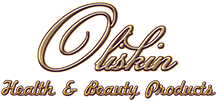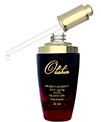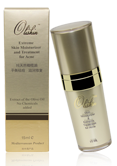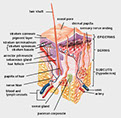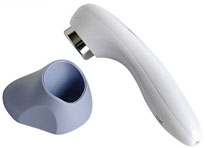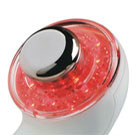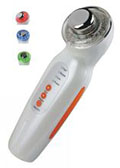Skin Care Products
Frequently Asked Questions

Customer Service
- Customer Service
- Authorized Sales
- Distributors
- Marketing
- Certifications

Ingredients
Ingredients for skin care
A
Acetate: An acetic acid salt; the word that follows or precedes acetate on an ingredient list determines the function.
Acetone: Solvent commonly used in fingernail polish removers and toners; can be drying and irritating depending on concentration.
Acetylated Lanolin Alcohol: An alcohol that is not drying. Helps soften skin; is highly comedogenic (causes blackheads and/or whiteheads).
Acrylates Copolymer: Active ingredient in an oil-absorbing gel, such as Clinac O.C.
Acrylates/Octylpropenamide Copolymer: creates a water-repelling base/matrix for cosmetics claiming water-proof properties.
Alcohol SD-40: sometimes listed as SD Alcohol 40 and synonymous with alcohol SDA-40, it is a high grade purified cosmetic alcohol. Evaporates instantly, so it is used as a vehicle to transport important ingredients to the skin's surface and then leave them there; gentler to the skin than ethyl (rubbing) alcohol. May help kill bacteria.
Algae/Seaweed Extract: An emollient, restoring moisture content to skin; claims to have antioxidant properties.
Allantoin: A botanical thought to have skin calming properties; possibly reduces irritation.
Alpha Hydroxy Acid: An active ingredient derived from fruit acids. Helps exfoliate the top layers of the epidermis: promotes moisture restoration and helps penetration of other ingredients; highly sought after for use in anti-aging and bleaching skin care products. May irritate the skin especially if overused. Buffering the pH helps make them less irritating to the skin, but also reduces exfoliating effect. AHAs include: citric acid (citrus fruits), glycolic acid (sugar cane), lactic acid (milk), and the less common AHAs used in cosmetics malic acid (apples) and tartaric acid (wine). AHAs increase sun sensitivity due to their exfoliant behavior.
Alpha Lipoic Acid: An antioxidant; is both water and fat soluble so it can protect many areas of a cell. Also, has anti-inflammatory properties.
Alum: usually in crystal or powder form; has strong astringent properties; used in styptic sticks, popular with men who often nick themselves shaving.
Ascorbic Acid: vitamin C; an antioxidant and stimulant of collagen synthesis by skin cells (fibroblasts). Can also have skin lightening effect in certain preparations. Only L- ascorbic acid (as opposed to D - ascorbic acid) is effective.
Ascorbyl Palmitate: fat-soluble vitamin C derivative. Good antioxidant but less effective than vitamin C for stimulating collagen synthesis.
Avobenzone: UV radiation blocker used in sunscreens. Also, sold under brands Parsol, Eusolex, and Escalol.
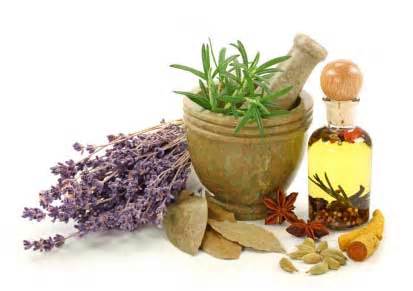 B
B
Beeswax: waxy component in many skin care products; provides moisture as well as a barrier mechanism. Also, an emulsifier (helps oil and water blending). May be mildly comedogenic.
Bemotrizinol (Tinosorb S): UV radiation blocker used in sunscreens.
Benzalkonium chloride: Preservative; may occasionally cause allergy or sensitivity with continuous use.
Benzethonium chloride: Preservative against broad spectrum of microorganisms (fungi, bacteria, algae). Typically used in concentrations under 0.5%.
Benzoic acid: Preservative against growth of microorganisms; effective against fungi but only marginally useful against bacteria. Typically used in concentrations from 0.05 to 0.1%. Sensitivity to benzoic acid is rare but possible.
Benzophenone-3 (oxybenzone), benzophenone-4 (sulisobenzone): UV radiation blockers used in sunscreens.
Benzoyl Peroxide: antibacterial agent that kills P. acnes, the germ responsible for acne breakouts. Can be drying and/or irritating. Some develop high skin sensitivity to benzoyl peroxide. Available in both prescription and OTC forms ranging from 2.5 to 10%.
Benzyl alcohol: Antibacterial preservative typically used in concentrations 1 to 3%. May cause skin irritation.
Beta Hydroxy Acid: a subclass of organic acids; the most common one is salicylic acid, a long term ingredient used for exfoliation of dry skin as well as for acne therapy.
BHT: Potent synthetic oil-soluble antioxidant often used as a preservative against rancidity.
Bisoctrizole (Tinosorb M): UV radiation blocker used in sunscreens.
Boric Acid: An antiseptic used as a preservative to prevent yeast overgrowth. May be irritating.
C
Caffeine: Used to alleviate puffiness under eyes.
Camphor: A cooling agent; may help alleviate the symptoms of itching and irritation.
Carbomers (934, 940, 941, 980, 981): Stabilizers and thickeners common in skin care products.
Carmine: Red pigment; found in many mascaras; can be irritating.
Cellulose: Polymer from plant cell walls; used as a thickener and emulsifier.
Ceramides: Epidermal hydrating agent; expensive due to scarcity.
Ceteareth: Cetearyl and stearyl alcohols combined for use as a lubricant.
Cetyl Alcohol: Lubricant and emulsifier. Nonirritating, nondrying, noncomedogenic.
Cocoa butter: Vegetable fat solid at room temperature but liquid at body temperature. Due to this property often used in lip balms and massage creams. Considered comedogenic and may also (rarely) cause allergy.
Collagen: The main supporting fiber located within the dermis, gives strength and provides structure. You cannot replace lost collagen by simply applying it to your skin due to its large molecule size. However, topical collagen can act as a moisturizing agent.
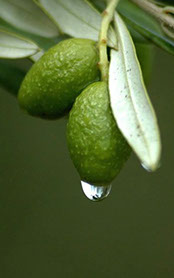
Corticosteroids*: Used to suppress inflammation associated with skin conditions like dermatitis, eczema and psoriasis, steroid creams contain powerful ingredients like Clobetasol Propionate, Fluocinolone Acetonide or Betamethasone Dipropionate. One of steroids side effects is skin lightening, but prolonged use can lead to skin problems such as steroid rosacea and thinning of the epidermis.
Cyclic Acid: A new term for Hyaluronic Acid, an effective humectant/moisturizing agent.
Cyclomethicone: Form of silicone; gives products a smooth texture; noncomedogenic.
D
DEA (diethanolamine): An organic alkali used in skin care formulas to neutralize acids (raise pH). Usually listed on labels preceding a compound it is neutralizing. FDA has released a warning regarding the association between DEA and cancer in laboratory animals.
Dimethicone: a form of silicone; skin protectant; moisture sealant; noncomedogenic; has been used in some scar therapies.
E
Ecamsule: UV radiation blocker used in sunscreens.
EDTA: preservative; slows down degradation (e.g. oxidation) of ingredients by chelating (grabbing and shielding) catalytic trace metals; may cause contact dermatitis.
Elastin: a fiber within the dermis similar to collagen, gives support and "snap" to the skin. In topicals, it cannot penetrate the skin, but does have moisturizing effect.
Ellagic Acid: naturally occurring ingredient; helps inhibit the formation of sun and age spots.
Ensulizole: UV radiation blocker used in sunscreens.
Ethyl Alcohol: aka rubbing alcohol or ethanol; has antibacterial activity; usually too strong for regular use in cosmetics; very drying at high concentrations; sometimes used in astringents and toners. Use moisturizer after using anything with ethanol.
F
FD&C Dyes and Colors: dyes approved by FDA for food, drug, and cosmetic use.
Fragrance: an aromatic blend of natural essential oils and/or synthetic fragrance substances.
Free Radical Scavengers: another term for antioxidants.
G
Glycerin: hydrates and provides a skin barrier against loss of moisture; allows topical agents to go on very smoothly; may clog pores when present in high concentrations.
Glycine: amino acid vital to collagen synthesis; it is unclear if applying glycine topically affects collagen synthesis.
Glycogen: natural sugar (glucose) based polymer somewhat similar to starch; acts as a conditioner.
Glycolic Acid: exfoliant, used in a wide range of exfoliating products, from exfoliating lotions to chemical peels. May improve fine lines. Overuse can cause skin irritation and other skin damage.
Glycol Stearate: thickening agent that helps give products a luminescent or opalescent appearance.
Grape Seed Extract: a botanical extract shown to be an effective antioxidant.
Green Tea Extract: a botanical extract shown to be an effective antioxidant.
Guar gum: Plant derived polysaccharide used as a thickening agent in skin care formulations. May also increase moisture retention due to coating action.
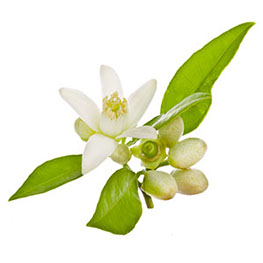 H
H
Homosalate: UV radiation blocker used in sunscreens.
Hyaluronic Acid: also referred to as a "cyclic acid"; an effective humectant/moisturizing agent.
Hydroquinone: skin pigmentation lightening agent; a maximum of 2% is sold over the counter; higher concentrations available by prescription.
Hydroquinone*: Hydroquinone is known to produce serious side effects when used over a long period of time. The Story of Cosmetics highlights this ingredient as one of the most toxic ingredients on the market. It is reported to increase the risk of developing leukemia, liver cancer, skin irritation, irreversible hyperpigmentation (exogenous ochronosis) * and reproductive damage. Hydroquinone photosensitizes the skin, making it susceptible to skin cancer. The FDA regulates the use of hydroquinone in the U.S. Over-the-counter skin lighteners can contain up to 2% hydroquinone. Dermatologists can write prescriptions for lighteners that contain up to 4% hydroquinone.
I
Isopropyl Alcohol: vehicle with antibacterial properties; drying to the skin especially in higher concentrations.
Isopropyl Isostearate: emollient.
Isopropyl Palmitate: emollient usually derived from palm and/or coconut oil; may be comedogenic.
Isostearic Acid: fatty acid that forms a film on the skin; may be comedogenic.
J
Jojoba Oil: natural oil extracted from the seeds of the desert shrub Simondsia Chinesis. Is an effective emollient and lubricant. According to some claims also a delivery enhancer.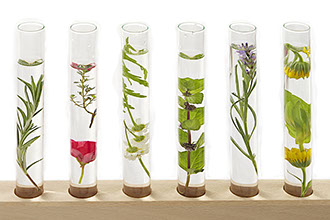
K
Kaolin (China Clay): used in oil-absorbing powders and masques; highly absorbent.
Kojic Acid: skin lightener; sometimes promoted as a bleaching agent for ethnic skin.
L
Lactic Acid: alpha hydroxy acid used in dermatology to hydrate and smooth dry, flaking skin. May occasionally be used in high concentrations as a chemical peel.
Lanolin: emollient and moisturizer; obtained from sheep; a sensitizer like other wool derivatives, in eczema-prone individuals.
Lecithin: emollient and emulsifier.
Licorice Extract: skin lightener; believed to be more potent than kojic acid.
Linoleic Acid: essential fatty acid, emollient and emulsifier.
Liposomes: active ingredient delivery system; hollow spheres made from phospholipids (such as lecithin) that are up to 300 times smaller than skin cells. Liposomes are filled with active agents which they carry into the skin and then gradually release.
Lysine: amino acid important for collagen synthesis; possibly ineffective topically for that purpose.
M
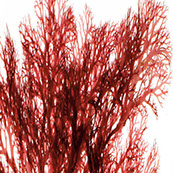 Magnesium Ascorbyl Phosphate: a vitamin C derivative; more stable than vitamin C; has comparable effectiveness as collagen synthesis booster.
Magnesium Ascorbyl Phosphate: a vitamin C derivative; more stable than vitamin C; has comparable effectiveness as collagen synthesis booster.
Mercury*: The use of mercury as an ingredient in skin lighteners is banned in the U.S. However, some skin lighteners produced outside the U.S. may still contain mercury.
Methyl Gluceth: a humectant/moisturizing agent.
Methylparaben/Propylparaben: Food grade preservative. One of the most commonly used preservative in cosmetics today; nonirritating, non sensitizing and nontoxic. May be comedogenic in susceptible persons.
Mexoryl SX: UV radiation blocker used in sunscreens.
Mineral Oil: a liquid blend of petroleum hydrocarbons obtained. An effective solvent for removing oil, grease and makeup from the skin. Comedogenic. May be drying with prolonged use. Most companies no longer use mineral oil in products; vegetable oils have been found to be as effective and more skin friendly.
Mucopolysaccharides: safe and effective humectants.
Myristyl Myristate: emollient; an ester of myristyl alcohol and myristic acid.
N
NaPCA: a humectant, Same as Sodium PCA.
Nanospheres: active ingredient delivery system; micro-reservoir particles of porous polymers that have a special structure permitting high absorption and timed release of the agents into the skin.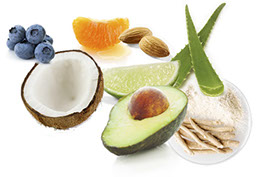
O
Octocrylene: UV radiation blocker used in sunscreens.
Octyl Methoxycinnamate: UV radiation blocker used in sunscreens.
Octyl Palmitate: nondrying, non-greasy solvent; often used in cleansers, astringents.
Octyl Salicylate: UV radiation blocker used in sunscreens.
Oxybenzone: UV radiation blocker used in sunscreens.
P
PABA (Para-Aminobenzoic Acid): UVB blocker used in sunscreens during the 1970's; can cause contact dermatitis, therefore is now out of favor.
Panthenol: a B vitamin (B5), works as a humectant (holds water in the skin). May promote skin healing.
Parabens: One of the most commonly used group of preservatives in cosmetics today; nonirritating and non sensitizing. Methyl paraben may degrade releasing methanol, a potentially toxic chemical. To what degree this actually occurs in skin care products is unclear. Various forms exist, name ending in (e.g. methyl paraben, ethyl paraben, etc.).
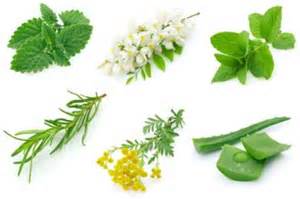 Petrolatum: Heavy vehicle based on petroleum hydrocarbons, most commonly known for its use in Vaseline; good for sensitive skin but is occlusive and can cause or aggravate acne in susceptible individuals.
Petrolatum: Heavy vehicle based on petroleum hydrocarbons, most commonly known for its use in Vaseline; good for sensitive skin but is occlusive and can cause or aggravate acne in susceptible individuals.
Polybutene: helps make liquids texturally viscous.
Poly Hydroxy Acid: PHA, derived from the buds of fruit trees; is claimed to be gentler yet as effective as AHAs; still debatable.
Proline: amino acid vital to the composition and production collagen; possibly ineffective in topical products.
Propylene Glycol: vehicle for cosmetic solutions; excellent for hydrating dry skin but can act as a contact dermatitis sensitizer in susceptible individuals.
Q
Quaternium-15 & 19: a preservative antimicrobial active against a wide spectrum of microorganisms. A quaternary ammonium salt.
Quaternary Ammonium Salts (QUATS): various derivatives in this group are used in waterproof sunscreens because of their cationic properties. QUATS chemically react with the skin, making skin surface more water resistant.
R
Resveratrol: antioxidant which supports and protects collagen; may also inhibit some mechanisms of aging by 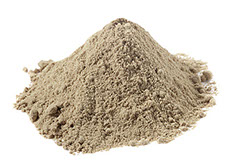 modulating gene activity.
modulating gene activity.
Retinol: form of vitamin A; fat soluble; depending upon concentration, estimated to be approximately 10 times less effective than tretinoin; relatively unstable. May irritate skin in high concentrations.
Retinal: form of vitamin A; fat soluble; less effective than tretinoin; relatively unstable. May irritate skin in high concentrations.
Retinyl Palmitate: (also known as Vitamin A Palmitate); ester of retinol combined with palmitic acid, considered a more stable alternative to retinol or retinal for normalizing the skin's texture and helping smooth out fine lines. Less irritating than retinol.
Retinyl Palmitate Polypeptide: water soluble formulation of Vitamin A.
Rose Hips: botanical extract of the fruit of the rose plant found to have high concentrations of vitamin C.
S
Salicylic Acid: the most common BHA (beta hydroxy acid); medically used as an exfolliant and debriding agent. Cosmetically used in some chemical peels and to reduce oiliness and acne.
Silica: highly oil absorbent.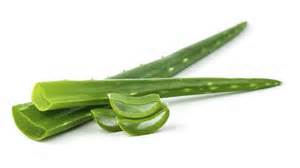
Silicone: protects the skin and creates a sheen. Thought to be helpful in reducing the appearance of hypertrophic scars.
Silk Powder: incorporated into cosmetic powders to help absorb skin moisture and oils.
Silk Proteins: prevents dehydration; commonly found in eye rejuvenation creams.
Sodium Bicarbonate: neutralizes acid (raises pH), making products less irritating; commonly known as baking soda.
Sodium Borate: preservative; related to boric acid; potential irritant.
Sodium Hyaluronate: effective humectant related to Hyaluronic acid (salt form), works to moisturize the skin.
 Sodium Laurel Sulfate: used in most cleansers and soaps; acts as a surfactant, offers good foaming qualities; a known skin irritant, but contrary to popular misconceptions, does not cause cancer.
Sodium Laurel Sulfate: used in most cleansers and soaps; acts as a surfactant, offers good foaming qualities; a known skin irritant, but contrary to popular misconceptions, does not cause cancer.
Sorbic Acid: preservative; primarily protects products from yeast overgrowth.
Sorbitol: sugar-based ingredient; pulls water by osmosis from the largest source. Typically this is the air, so it helps hydrate skin. In arid conditions, however, water will be pulled out of the skin, resulting in dehydration.
Stearic Acid: fatty acid used in soap manufacturing; may cause irritation.
Sulfur: helps kill some species of bacteria on the skin improving acne, seborrhea and psoriasis. Typically found in soaps, shampoos and some topical acne medications.
T
Tinosorb S: UV radiation blocker used in sunscreens.
Tinosorb M: UV radiation blocker used in sunscreens.
Titanium Dioxide: UV radiation blocker used in sunscreens.
Tretinoin*: The Vitamin A derivative found in Retin A, Avita and Renova, tretinoin increases cellular turnover rate, thus eliminating pigment already pooled in the epidermis. Overuse can result in dry, thinner skin. Sensitive skin types can also experience redness, scaling, itching and burning. Thinner skin can increase susceptibility to deleterious effects of UV exposure.
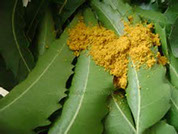
Triclosan: commonly used as a preservative; believed to be hypoallergenic.
Tyrosine: amino acid that may potentiate the effect of vitamin C on collagen synthesis by fibroblasts; plays a role in melanin formation.
U
Unipertan: A suntan-accelerating product composed of tyrosine, riboflavin, and collagen. The original form of unipertan employs animal by-products. A number of derivatives and variations of the original unipertan exist, generally designated by letters or numbers. None of the unipertans protect from UV rays or make tanning safe.
Unipertan V-242: A totally vegetable form of unipertan, providing tyrosine (an amino acid essential to the tanning process) and adenosine triphosphate (a vegetable catalyst to the tanning process), in a vegetable collagen base.
V
Vitamin A: important for skin renewal; may improve skin texture and fine lines; may improve acne. Less effective and less irritating than tretinoin. Causes sun sensitivity and not to be used if pregnant or nursing.
Vitamin C: (L-ascorbic acid) boosts collagen synthesis by fibroblasts; vital water soluble antioxidant both systemically as and topically. Unstable in solution when exposed to air.
Vitamin D: regulates cell turn over; prescription derivatives of vitamin D are used to treat psoriasis (Dovonex).
Vitamin E: (Tocopherol) an oil soluble antioxidant widely used in skin care; also an emollient.
W
Water: Most frequently listed main ingredient in skin care products, used in its purest form, void of minerals and other chemicals, hence the various names like distilled, deionized, purified, etc.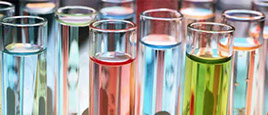
Witch Hazel: botanical with astringent properties, helps remove excess surface skin oils.
X
Xanthan Gum: thickening agent.
Y
Yeast Extract: extract from brewer's yeast (Saccharomyces cerevisiae) containing a complex mixture of proteins, sugars, vitamins, amino acids, etc. According to some claims may enhance the rate of renewal (cell turnover) of the skin.
Z
Zinc Oxide: A compound of zinc and oxygen, zinc oxide is a mild antiseptic and anti-irritant. When added to sunscreens, it physically prevents UV light from reaching the skin. It is also the key active ingredients in diaper rash creams.
Back to top ⇧
Back to top ⇧
You may also read:
⇪
Top
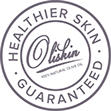
Bringing the Best to Everyone We Touch
and Being the Best in Everything We Do
Receive emails about new products, latest trends, and special offers
© Oliskin 2012 - 2014. All rights reserved. Terms of Use Privacy Policy
